There’s been much debate about the high cost of both heavy rail investment and new light rail lines. But how about combining the two? In the first of a series looking at light rail aspects, Peter Plisner examines the prospects for tram-train services.
In this article:
There’s been much debate about the high cost of both heavy rail investment and new light rail lines. But how about combining the two? In the first of a series looking at light rail aspects, Peter Plisner examines the prospects for tram-train services.
In this article:
- Sheffield's tram-train pilot, launched in 2018 after long delays, successfully runs trams on both heavy and light rail systems.
- Technical challenges—power supply, platform design, and dual-voltage requirements—offered valuable lessons for future UK projects.
- Renewed UK interest sees tram-train expansions in Wales and Sheffield, offering cost-effective, low-carbon public transport alternatives.
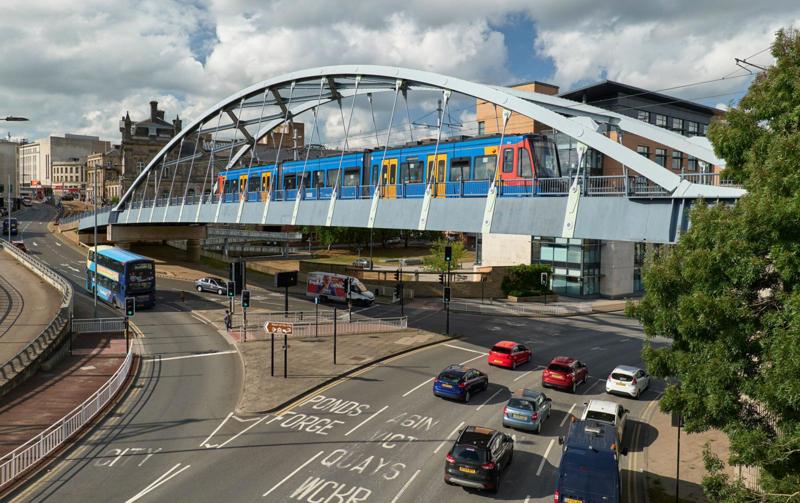
Talk to any rail expert about tram-trains and they’ll point you to the government pilot in Sheffield, where Class 399 tram-trains run from the city centre to Rotherham on both Light Rapid Transit (LRT) routes and heavy rail lines.
The pilot was first announced in 2008, but the first services didn’t actually run until ten years later.
The project was a collaboration between the then-Stagecoach-run Supertram operation, Network Rail, South Yorkshire Passenger Transport Executive and the Department for Transport. The service was launched by then-Transport Minister Jo Johnson on October 28 2018.
Seven years later the service is still running, and it has become a permanent part of the Supertram network.
But getting the tram-trains onto the network wasn’t easy. Many lessons were learned, which are now proving extremely useful in other places where similar operations are being considered.
So, what is tram-train operation? Well, in its basic form, it’s a tram that runs on both heavy rail and light rail tracks.
The vehicle is more than just a tram - it requires much-improved crashworthiness to run on heavy rail lines, and it has to be capable of being powered from both a heavy rail 25kV AC system and the light rail 750V DC power.
And that latter capability was one of the reasons the tram-train pilot in Sheffield was over budget and delayed coming into service.
One of the major delays came with issues over the power supply for the new trams.
Although built to run on both heavy and light rail systems, a promised electrification of the heavy rail line to Rotherham never actually happened, which meant the tram-train pilot having to do it instead and the line fitted with an LRT 750V DC power system.
Steve Edwards is the former Director General for South Yorkshire Passenger Transport Executive, and was involved with the tram-train pilot.
“It needed to operate on the two different systems. But in the end, because of other challenges on the heavy rail side, that leg was electrified based on the components on the rest of the tram network, so it isn’t operating into the heavy rail power system.
“There were other challenges around funding and wider implications about electrification and that being delayed.”
The decision to install 750V DC also caused issues, according to Edwards.
“At the time it created a lot of problems, because they had to use power systems that Network Rail was unfamiliar with. It all had to go through safety approval for all of the components that were going to be used, even though for light rail systems it was a bread and butter activity.”
It means that in Sheffield, there are trams capable of running on two different power systems, but are actually only using the one.
Edwards also highlights issues with the different platform heights between tram and train. That’s not an issue in Sheffield, where tram-trains run on the LRT network with low platforms, but there were challenges at Rotherham.
“If you have a low-level platform extension, you need to consider the safety of passengers and make sure that they don’t start walking across the track.
“We’d already thought about it and possible solutions. But given the practicalities of the station and the space available, it was only once it was being built and considered that some of the detail could be properly worked out. So, there were a lot of things that contributed to some of the challenges that the system had.”
The Sheffield tram-train route starts at Cathedral Square and follows the tram line until it approaches the Meadowhall shopping centre. It then spurs off to join a freight route, and then goes through Rotherham Central station before going back onto what is effectively a short section of LRT route to the Parkgate shopping centre.
Although it took much longer than anyone ever expected to be installed and to start carrying passengers, many lessons were learned along the way.
Melanie Corcoran, Executive Director of Transport at South Yorkshire Mayoral Combined Authority (SYMCA), says: “That was part of the reason why the Department for Transport wanted to fund a pilot and to absolutely learn, so that other places could take the learnings from that.
“They were really about understanding the changes to the industry costs of operating a lighter-weight vehicle on the national heavy rail network.
“Also, understanding the technical standards that were required to allow the inter-running of the lightweight vehicles with heavy rail passenger and freight traffic.”
Other important lessons were learned around the technology of tram-trains.
“We had to procure vehicles with a bespoke wheel profile, so that they could actually operate on the heavy rail track, the tram track, and on street as well. So, there was quite a bit around the technology,” says Corcoran.
Issues with the Sheffield pilot came despite many years of successful operation of the concept in Karlsruhe, in Germany.
Seen as the birthplace of tram-trains, it started running Light Rail Vehicles (as they are called in Europe) on heavy rail tracks in 1979, running with 750V DC overhead electrification. In 1986, they moved to dual-voltage AC/DC technology.
The city’s first major integration took place in 1992, when tram-trains started running between Karlsruhe and Bretten, a distance of around 25km (15.5 miles).
Karlsruhe had a fully developed tram-system that had been operating since 1900, and it was also an important railway junction where many main lines and branch lines converged. That created an ideal scenario for track sharing, and for connecting the tram and rail network.
Using existing infrastructure has helped to avoid the need for investment in interchange stations between trams and national and local trains.
The success of the tram-train operation there has also led to increased levels of residential development on the outskirts of both cities and along the route.
Holger Wagensommer, Head of Infrastructure and Design at KVV, the Karlsruhe transport authority, says: “If you have a better connection with tram-train services, you can see an increasing number of people wanting to live in areas around cities along the lines with short distances to the stations.
“You have the effect that you have a better connection to the city centre where you work, but you can also live outside the city centre and get to work without the need to change from trains to trams. Surrounding areas have grown due to the tram-train service.”
It has also led to a noticeable reduction in car use.
“Around 40% of tram-train passengers previously used their cars before we started the line in Bretten. They have really changed their mobility system. And that’s solely because you don’t have to change train to get to the city centre,” says Wagensommer.
Along with the tram-train operation, all of the stations in rural villages between Karlsruhe and Bretten have park and ride facilities, further encouraging a switch from car to tram-train.
Following the successful operation in Germany and the plans for a pilot in Sheffield, several other parts of the UK, including the West Midlands, looked at the idea of tram-train operation, but never actually installed it.
However, in recent years there has been renewed interest in the concept, including in Manchester, and several projects planned under the now defunct Restoring Your Railway initiative.
There were also further possible schemes in South Yorkshire. And with HS2 originally running through Sheffield station, tram-train operation was considered as a way of removing some of the local services from the station to make more space for high-speed trains.
According to Edwards, the idea had additional benefits in terms of getting more people into the city centre: “You had the advantage of being able to bring people into the centre of Sheffield, because the geography is uphill from the station to the main shopping area.”
But despite the success of the pilot, nothing more happened until Wales was granted devolved transport powers by the government and embarked on something of a transport revolution in the principality. Tram-trains became part of the story.
Transport for Wales is now introducing Stadler-built Class 398s on what are often referred to as the ‘Core Valley Lines’. They’re also known as the TAM lines, as they run from Cardiff to Treherbert, Aberdare and Merthyr.
These are heavy rail routes, and the plan is for tram-trains to run on the lines using a combination of discontinuous electrification and batteries, which are relatively small with around 140 kilowatt hours.
Unlike in Sheffield, where the plan was to use both LRT and heavy rail routes from the start, in Wales the tram-train technology has been adopted as a way of future-proofing rail operations.
Initially on the Valley lines, the tram-trains will operate under normal heavy rail conditions mixing with conventional trains and with signals. But there are plans to convert one existing heavy rail route into LRT operation.
“The only exception is the Cardiff Bay route, which is being converted to light rail,” says TfW Rolling Stock Strategy Manager Andrew Gainsbury.
“We’re ordering the tram-trains to sort of be future-proofed and to allow us to extend the network, so we wanted a bit of line that was the start of that concept. But equally the branch is proposed to be the start of a light rail network centred on Cardiff Bay.”
TfW also has plans, under the banner of ‘Cardiff Crossrail’, to create a new light rail link between Cardiff Central station and Cardiff Bay station, connecting the two stations by rail for the very first time.
The line would run on-street under LRT rules, extending from the Bay Line to Cardiff Central via Callaghan Square.
Gainsbury says: “It’s still in its early stages, so we’re not quite sure what the timetable is going to look like. But the expectation is that it will be a shuttle between Cardiff Bay and Cardiff Central. Whether that’s on the back of a service that runs down from the Valleys and reverses, we don’t know.”
What was the old Valley lines is being rebranded ‘South Wales Metro’, while adding tram-trains to the fleet also allows service frequency to be increased.
“At the moment, each of the branches to Treherbert, Aberdare and Merthyr have a half-hourly frequency,” explains Gainsbury.
“The intention is to increase that from two trains per hour to four trains per hour, so that will be 12 trains per hour at the bottom of the route. We will be going more to a sort of light rail-type frequency.”
In addition to future-proofing for LRT routes around Cardiff Bay, the tram-train technology opens the way for the conversion of underused freight lines to LRT operation.
Gainsbury adds: “North of Aberdare, there’s a mothballed freight line that goes up to Hirwaun. There has been talk of reopening that potentially for passenger operation, and that might be light rail, because that would be Class 398-operated. But at the moment, that’s not funded.”
Preparing the line for light rail tram-trains would clearly be much cheaper than reopening it again as a heavy rail line.
Back in Sheffield, despite the trials and tribulations surrounding the pilot, the route served by tram-trains has been very popular with passengers.
SYMCA’s Melanie Corcoran says: “We’d reached about half a million passenger journeys within the first six months. Considering that it was a brand new service, that’s pretty good going.
“We also had Transport Focus do passenger surveys, and we got a 100% passenger satisfaction score. People are very proud of Supertram locally - it’s the preferred mode of public transport for lots of people in Sheffield and Rotherham.”
She adds: “Unfortunately, just as the two-year pilot period was coming to an end, COVID hit. We weren’t able to see what it would have looked like had there not been a global pandemic. And, as in the case of all public transport, passenger numbers just dropped off a cliff.
“By the end of this financial year, we’ll be back to 94% of pre-COVID levels, which is actually a stronger bounce back than heavy rail and bus.”
There are also the decarbonisation advantages of running tram-trains.
In Wales, according to Andrew Gainsbury, that was one of the important factors when procuring the new rolling stock for the Valley lines.
“All of it was the old coal mining areas, if you go back far enough. The aspirations were to really modernise services there, regenerate it, and decarbonise it. No diesel north of Cardiff was the criteria that bidders had to achieve. And I think it’s proven to be a successful concept.”
So, prospects for tram-trains seem bright in the UK.
Steve Edwards, former South Yorkshire PTE Director General and now Chair of UKTram, says: “Despite the announcement last year about the Restoring Your Railway fund, I think a number of those projects are still being looked at and potentially could be funded at a later stage to move them forward, so there are still opportunities for tram-trains.
“Clearly there are a lot of advantages, particularly when you take into account some of the work that’s been done on battery-operated vehicles, at least for part of the journey.
“You could see that there are opportunities there to reduce some of the cost of overhead line equipment, by looking to get services either into different places or extend them, or link between different areas.
“And clearly there is a lot of existing rail infrastructure that could be reused, particularly around our big cities.”
Sheffield Supertram is now under the control of the South Yorkshire Metropolitan Combined Authority, through a company called South Yorkshire Future Trams Ltd. And under the new management, more tram-train routes are being considered.
“We’re actually exploring extending the tram network. And it’s quite likely that tram-trains will be the option on certainly two out of three of those routes,” says Corcoran.
One of them is expected to be a route from Sheffield to Chesterfield using tram-train technology.
It’s yet another example that shows how prospects for tram-train operation in the UK are bright, and how in the years to come disused and underused rail routes could be brought back into life at lower cost by converting them into tram-train operation.
Login to continue reading
Or register with RAIL to keep up-to-date with the latest news, insight and opinion.

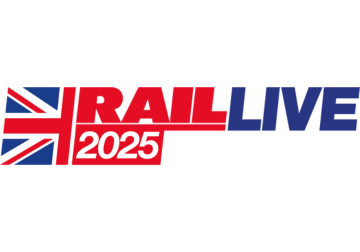
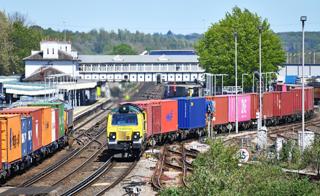
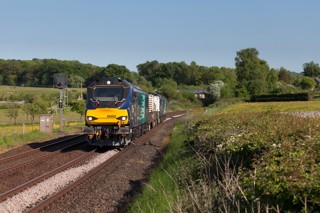

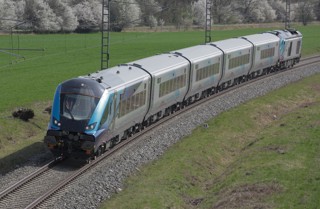
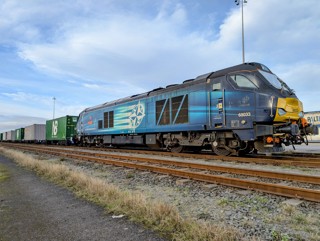











Login to comment
Comments
No comments have been made yet.